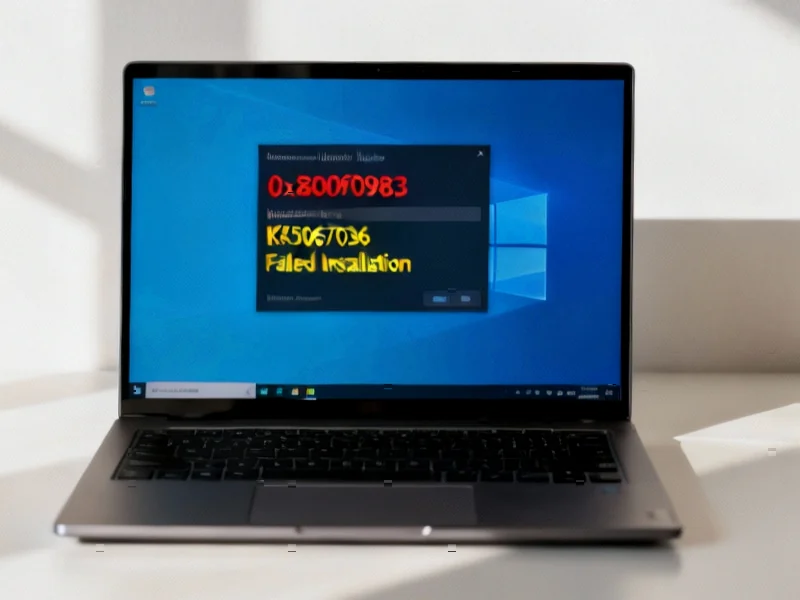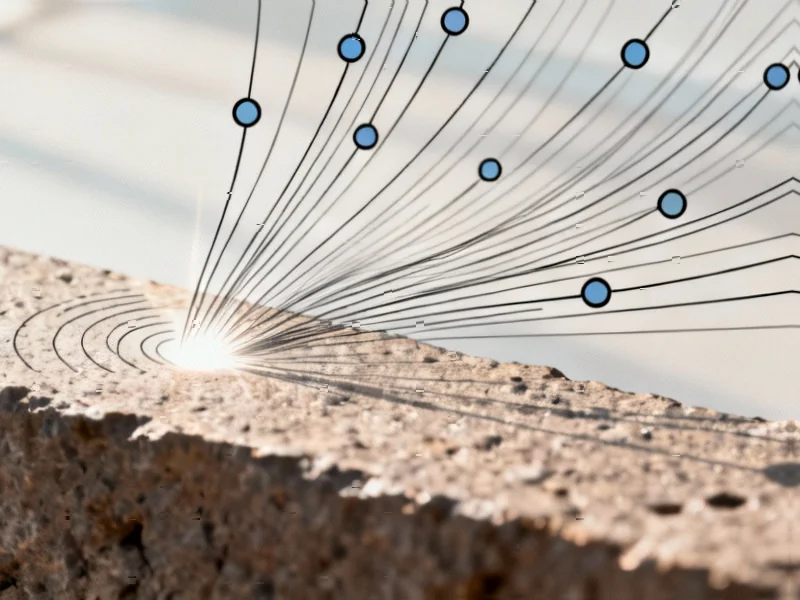According to Windows Report | Error-free Tech Life, many Windows 11 users are experiencing installation failures with the Preview Update KB5067036, which is currently rolling out to devices running version 25H2 build 26200.7019. The error code 0x800f0983 appears during the final installation phase despite successful download, with affected users reporting repeated failures even after running SFC and DISM scans or using the Windows Update Assistant. Microsoft has not officially acknowledged the specific cause, though incomplete update packages or component store corruption are suspected. The company had previously included a fix for similar error 0x800f0983 issues in the same KB5067036 update earlier this week, along with resolving a separate bug preventing “Update and shutdown” from fully powering off PCs. This ongoing installation problem highlights the challenges Microsoft faces with its Windows Update system.
Table of Contents
The Technical Underpinnings of Update Failures
Error code 0x800f0983 typically indicates issues with the Windows Component Store (CBS) or Windows Update components, which are critical to Windows 11‘s update mechanism. The Component Store serves as the repository for all Windows system files and updates, and when corruption occurs or files become mismatched, the update process cannot verify the integrity of the system state. What makes this particular failure noteworthy is that it’s affecting a preview build specifically designed for testing purposes—the very systems that should provide the most stable update experience for Microsoft’s quality assurance process. The fact that standard troubleshooting methods like SFC (System File Checker) and DISM (Deployment Image Servicing and Management) aren’t resolving the issue suggests deeper architectural problems than typical file corruption.
Microsoft’s Growing Quality Control Challenge
This incident represents another data point in Microsoft’s ongoing struggle with update reliability across its PC ecosystem. The irony that an update intended to fix previous installation errors is itself failing to install underscores the complexity of Microsoft’s current development approach. With Windows 11’s accelerated release cadence and increasing componentization, the company appears to be facing significant challenges in maintaining update stability. The situation is particularly concerning given that affected users report their systems showing as “up to date” even while the failed update remains pending—a contradictory state that could confuse less technical users and potentially leave systems vulnerable if they believe they’re properly updated when they’re not.
Broader Software Distribution Implications
The persistent nature of these update failures raises questions about the scalability of Microsoft’s current update infrastructure. As Microsoft continues to expand Windows 11’s feature set and support increasingly diverse hardware configurations, the combinatorial complexity of testing scenarios grows exponentially. This specific software bug affecting build 26200.7019 suggests that Microsoft’s automated testing pipelines may not be adequately capturing edge cases in component verification and dependency management. The company’s recommendation to manually download standalone update packages from the Microsoft Update Catalog—while a reasonable workaround—represents a step backward in user experience, requiring technical knowledge that most consumers don’t possess.
What This Means for Windows Update’s Future
Looking forward, Microsoft will need to address these recurring installation issues through both short-term fixes and long-term architectural improvements. The pattern of update-related problems suggests that the company’s current quality gates may be insufficient for catching compatibility issues before they reach users. As evidenced by user reports on Reddit and other community platforms, the frustration is mounting among Windows enthusiasts who typically serve as early adopters and de facto technical support for friends and family. If Microsoft cannot resolve these reliability issues, it risks eroding user trust in its update system at a time when security updates are increasingly critical. The company’s response to this specific incident—and how quickly it develops and deploys a permanent fix—will be closely watched as an indicator of its ability to maintain update reliability in the Windows-as-a-Service era.



